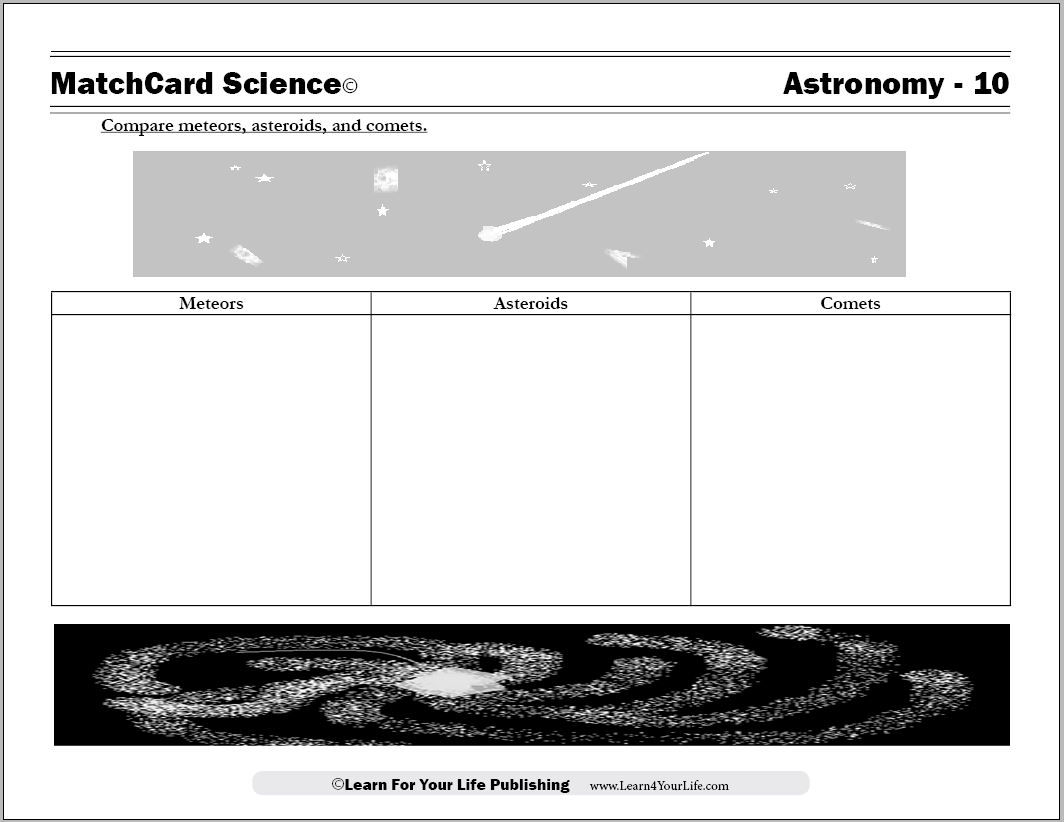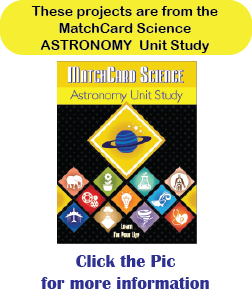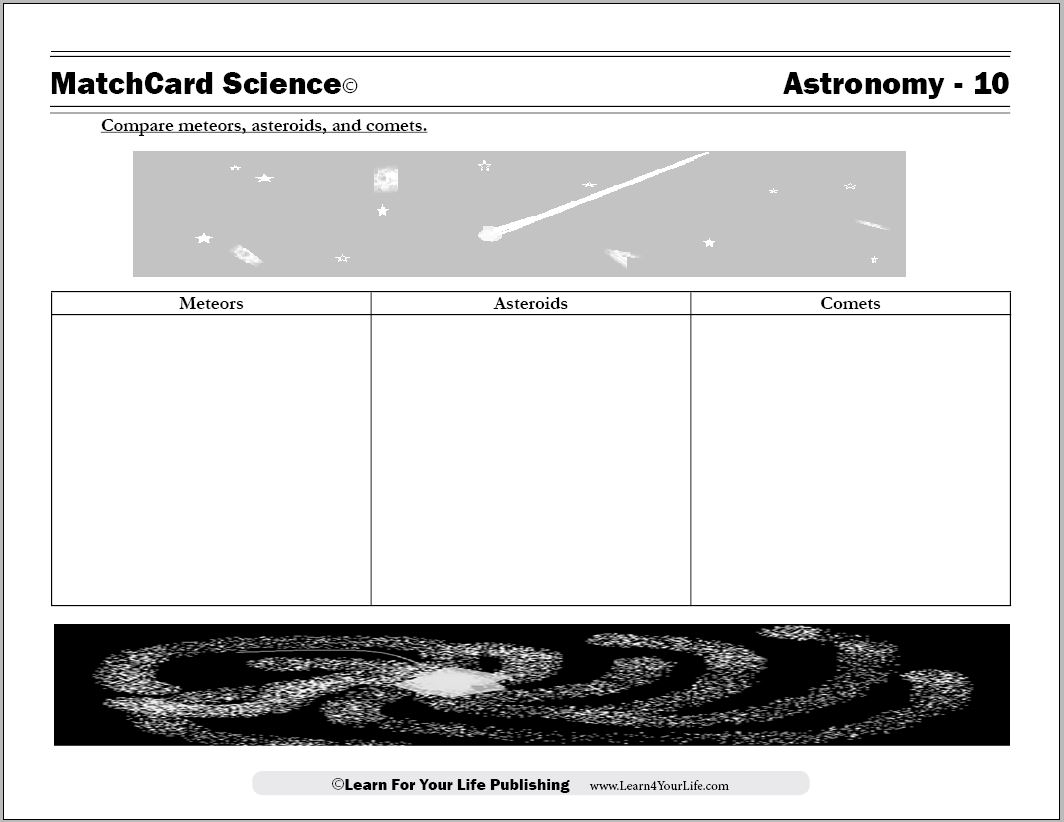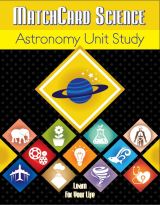Meteors Asteroids Comets
Use our Meteors Asteroids and Comets Worksheet to help your budding astronomer differentiate the pieces of rock, ice, and gas that streak across the sky.
Free Download Below


The Meteor, Asteroid, or Comet Worksheet
Objective: Compare meteors, asteroids, and comets.MatchCard: Download below.
How It Works: Information pieces give facts about meteors, asteroids, or comets. Put them on the correct place on the worksheet.
Print the Asteroid, Meteor, Comet MatchCard


Click image to go to download.
This is MatchCard #10 of the Astronomy Unit Study. Find more information on MatchCard Science below.
Get The Facts
Comets, Asteroids, Meteors, Oh My!

Facts about Meteors
Meteors are small pieces of rock and metal that burn up when they come into the Earth’s atmosphere.Meteor showers are momentary streaks of light that can be seen flashing across the sky.
They are commonly called "shooting stars."
Facts About Asteroids
Asteroids are fields of rocks that orbit the sun that are not large enough to be planets.They are located between the orbits of Mars and Jupiter.
Theorized to be the remains of old planets.
Facts About Comets
Comets are bodies of ice and gas that travel through space in an orbit.Comets may be seen in the sky on Earth for days or weeks when they enter our solar system.
Theorized to be remains left over from the origin of distant planets.
Out of This World Projects

Meteors At Home
You can collect micrometeorites by leaving a piece of cardboard on an open field for several days. Use a magnet to separate metallic and non-metallic pieces of dust. Where did the metal come from?Watch The Shower
Check if there are any meteor showers or other phenomenon visible in the near future. They occur fairly frequently and are best seen in the early AM before dawn when the moon is not bright. You can check the site www.stardate.org for the next expected shower.Dry Ice Comet
Dry ice can be dangerous. Use gloves to handle it; and make sure there is adult supervision.
Combine: 2 cups dry ice, 1 cup sand, 1 cup dirt, 1/2 cup of water, 1/2 cup of corn syrup.
Use a blow dryer on your comet to see the impact of the sun.
Watch a YouTube video of dry ice comets.
Halley's Comet on Your Family Tree
Halley's Comet orbits around the sun approximately every 75 to 76 years. Here are the last dates and the next expected date.
- 1835
- 1910
- 1986
- 2061 (prediction)
The Inter-Planetary Chef

Melt In Your Mouth Meteors
Melt 1/2 cup butter in pan. Add 1 cup chocolate chips and 1 cup mini-marshmallows until melted. Stir in six cups crispy rice cereal. Form into balls and let cool.Do not eat real meteors; they are not chocolate.
Mashed Asteroids
Enjoy this NASA inspired recipe. Combine:- 6 cups mashed potatoes
- 1 cup grated cheddar cheese
- Salt and Pepper to taste
Creamy Frozen Comets
- half gallon of whole milk
- 8 oz cool whip (slightly thawed)
- one 14 oz can sweetened condensed milk
- four crushed Oreos (or other chocolate crumbs)
- 1/2 cup nuts
- 1/2 cup coconut
MatchCard Science
How To Use MatchCards

Download the FREE MatchCard Science Instructor's Guide and see how MatchCards can make building their science knowledge base fun.
Astronomy Unit Study

Explore the universe with the MatchCard Science Astronomy Unit Study..
12 Science Unit Studies

Chemistry is only one of twelve complete unit studies for kids in 3rd to 8th grade.
Comprehensive objectives, hands-on projects, suggested science fair experiments, and the fun game-like MatchCards keep them interested in learning science. See all twelve MatchCard Science Unit Studies.
About Our Site
Hands-On Learning













